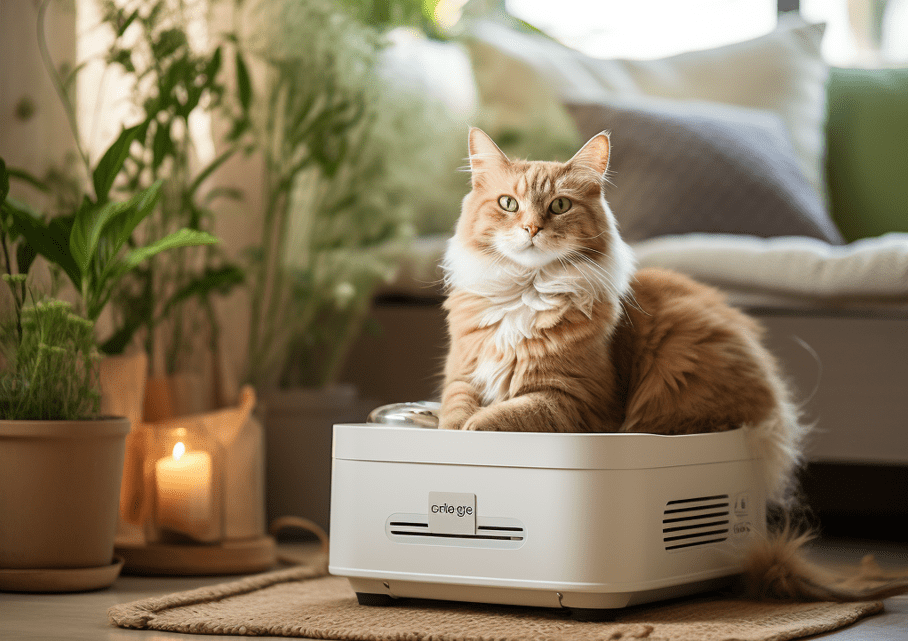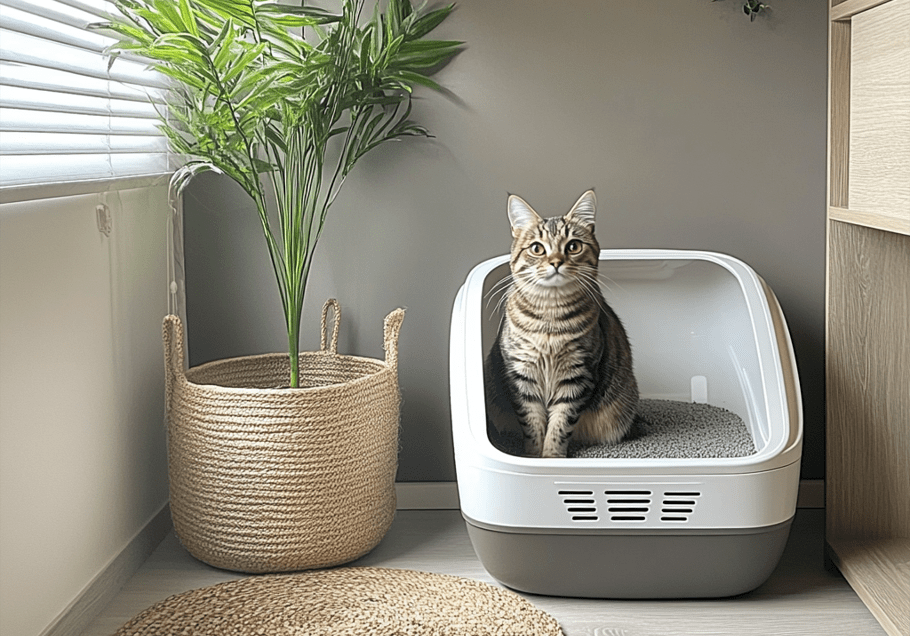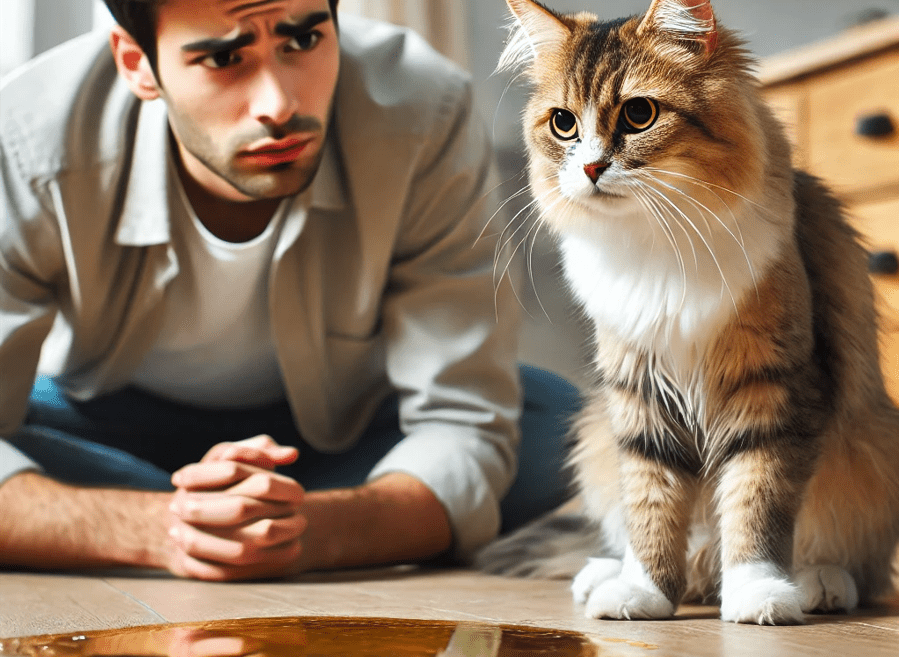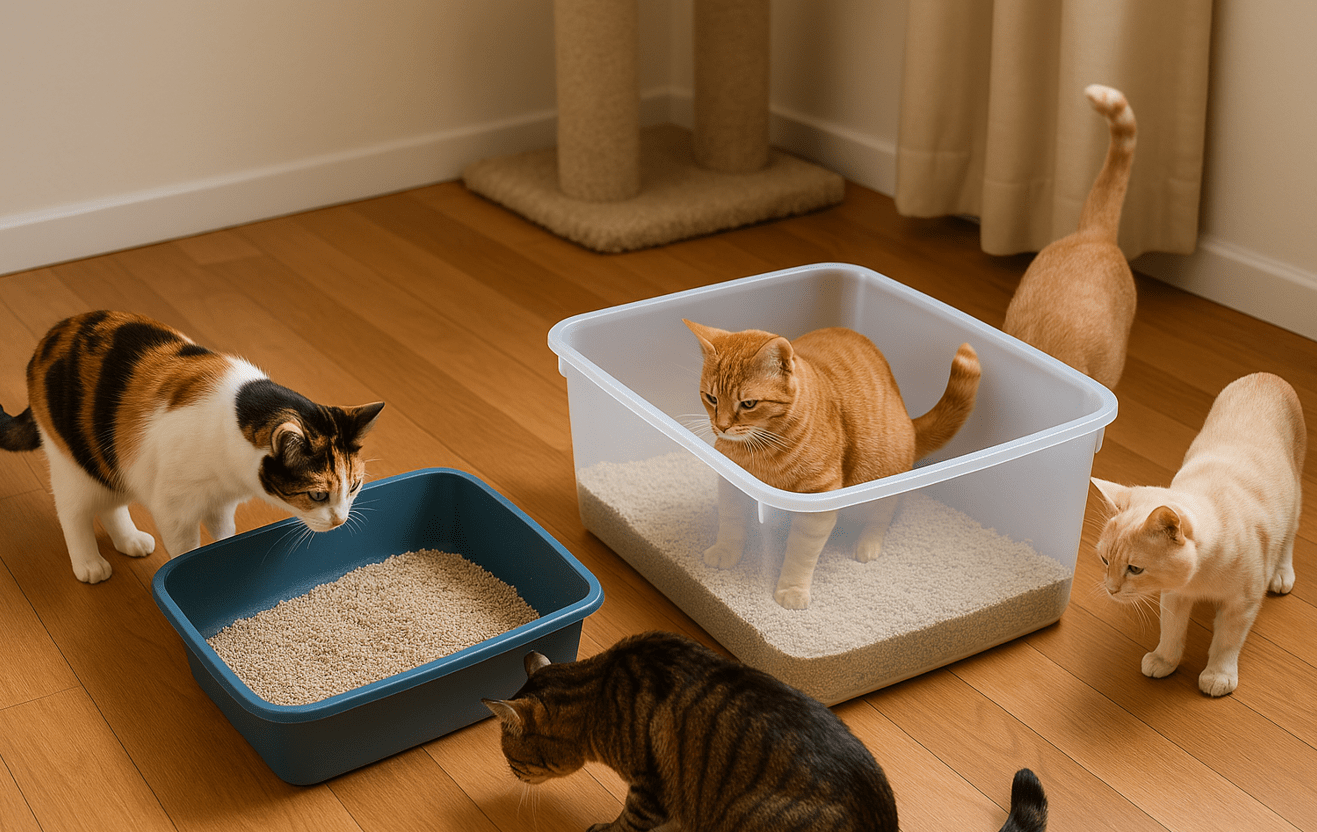
If you’re a cat owner struggling with litter box woes, you’ve probably wondered, Can I use a storage bin as a litter box? The answer is a resounding yes—and it might just be the game-changer your multi-cat household needs. Traditional litter boxes can be too small, too flimsy, or too expensive, especially when you have multiple feline friends. A storage bin, on the other hand, offers durability, space, and customization options that can make litter box management easier than ever.
But before you grab the nearest plastic bin, there are important factors to consider—size, material, hygiene, and cat comfort. This article dives deep into why storage bins make excellent litter box alternatives, how to set them up properly, and expert-approved tips to keep your home odor-free. Whether you’re dealing with a cat who kicks litter everywhere, a senior pet who needs easier access, or just looking for a budget-friendly solution, we’ve got you covered.
What You’ll Learn in This Guide:
Why storage bins outperform traditional litter boxes – Durability, space, and cost benefits.
How to choose the right bin – Key factors like size, depth, and material.
Step-by-step modification tips – Cutting entry points, adding ramps, and optimizing privacy.
Solutions for common problems – Reducing litter scatter, improving accessibility for senior cats, and controlling odors.
Maintenance and hygiene best practices – Keeping the bin clean in a multi-cat household.
Common mistakes to avoid – Ensuring your DIY setup meets your cat’s needs.
By the end, you’ll have all the knowledge to decide if this DIY solution is right for your furry companions.
Why a Storage Bin Makes a Great Litter Box Alternative
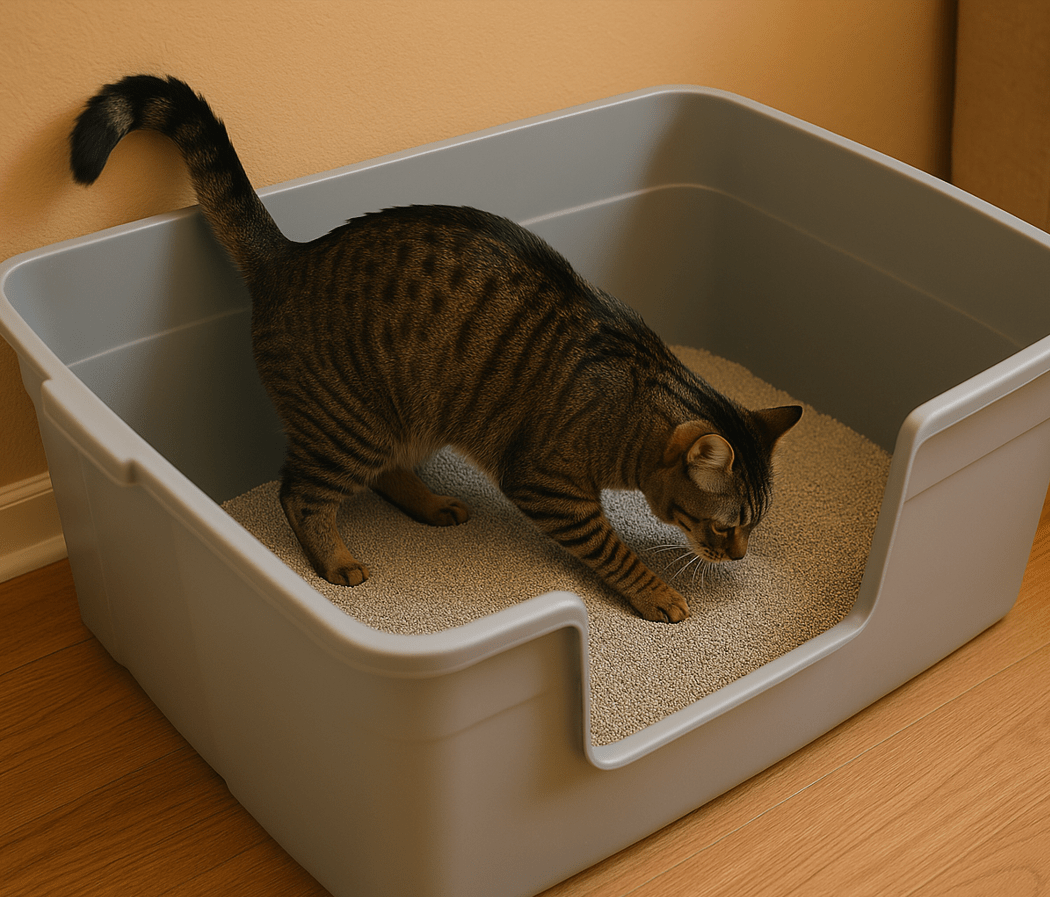
Traditional litter boxes often fall short when it comes to size and functionality. Many cats, especially larger breeds or those who like to dig vigorously, need more space than standard boxes provide. A storage bin solves this problem by offering deeper walls and a wider surface area, reducing litter scatter and giving cats ample room to move comfortably.
Another advantage is cost-effectiveness. High-quality, large litter boxes can be expensive, while storage bins are widely available at affordable prices. They also come in various sizes, making it easy to find one that fits your space. For households with multiple cats, using several bins can help prevent territorial disputes and ensure each cat has their own designated spot.
Durability is another key benefit. Unlike flimsy plastic litter boxes that crack over time, storage bins are built to withstand weight and frequent use. This makes them a long-term solution that won’t need constant replacing.
How to Convert a Storage Bin into a Litter Box: Step-by-Step Guide
If you’ve decided to use a storage bin as a litter box, the next step is ensuring it’s properly set up for your cat’s comfort and hygiene. Unlike traditional litter boxes, storage bins offer customization options that can significantly improve your cat’s bathroom experience—but only if done correctly. Below, we break down each step with expert-backed details to help you create the perfect DIY litter box.
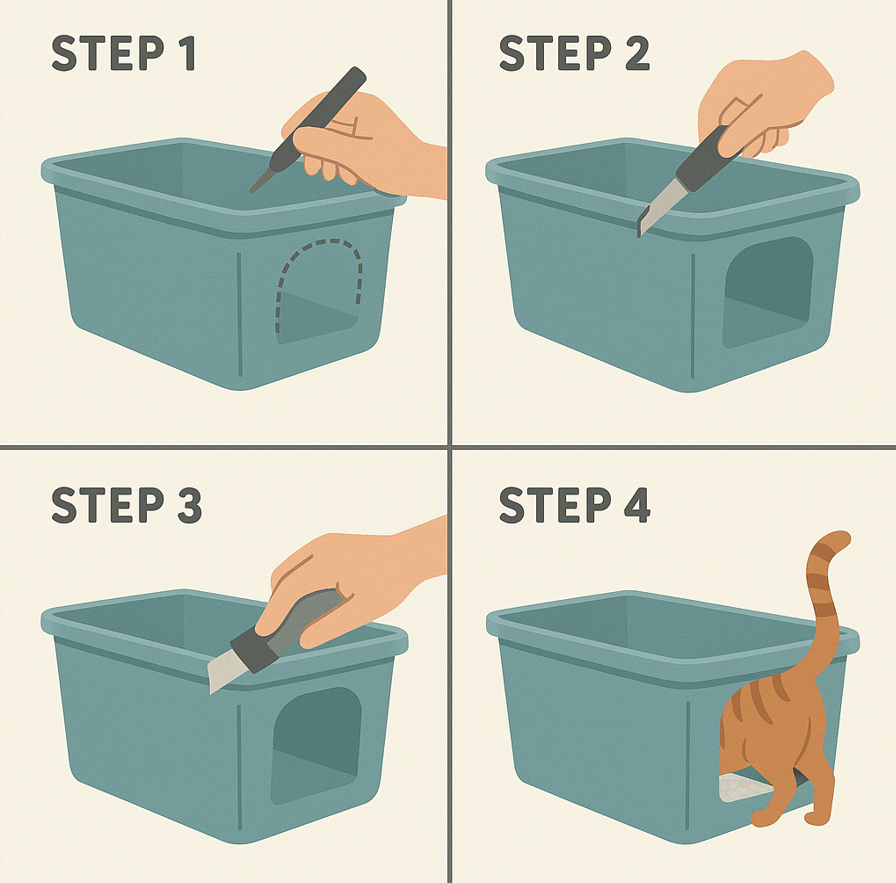
Step 1: Choosing the Right Storage Bin
Not all plastic bins are suitable for litter box conversion. Here’s what to look for:
Size Matters: Bigger Is Usually Better
1.Cats need enough space to turn around, dig, and cover their waste comfortably.
2.Minimum size recommendation: At least 1.5 times your cat’s length from nose to tail.
3.For larger breeds (like Maine Coons), opt for an extra-large bin (30+ gallons).
4.If you have multiple cats, consider separate bins to prevent territorial issues.
Height Considerations
1.High sides (12–18 inches) help contain litter scatter, especially for enthusiastic diggers.
2.Kittens, seniors, or disabled cats may struggle with tall bins—opt for a shorter bin (6–10 inches).
3.Alternatively, cut a low entry point for easier access (more details in Step 2).
Material Safety & Durability
1.Avoid bins with harmful chemicals (BPA, phthalates, or strong odors).
2.Look for food-grade, non-toxic plastic (often labeled as “PP” or “HDPE”).
3.Sturdy construction prevents warping and cracking over time.
Step 2: Modifying the Bin for Easy Cat Access
One of the biggest challenges with storage bin litter boxes is ensuring your cat can enter and exit comfortably. Here’s how to modify it properly:
Option 1: Low-Front Entry (Best for Kittens & Senior Cats)
1.Mark the cutting area: Use a marker to outline a U-shaped entry (6–8 inches tall and wide enough for your cat to pass through easily).
2.Cut carefully: Use a utility knife, jigsaw, or heavy-duty scissors to follow the marked lines.
3.Smooth the edges: Sand down rough plastic with fine-grit sandpaper to prevent injuries.
4.Optional: Line the entry with duct tape or pool noodles for extra padding.
Option 2: Top-Entry Design (Best for Litter Control)
1.Ideal for cats who kick litter everywhere.
2.Cut a large hole (10–12 inches in diameter) in the lid.
3.Ensure edges are smooth—use sandpaper or a file.
4.Place a litter mat underneath to catch stray granules.
Option 3: Two-Way Entry (For Nervous or Multi-Cat Homes)
1.Some cats prefer escape routes.
2.Cut two entry points (front and side) to reduce feeling trapped.
Step 3: Setting Up the Perfect Litter Environment
Now that your bin is ready, it’s time to optimize it for functionality and cleanliness.
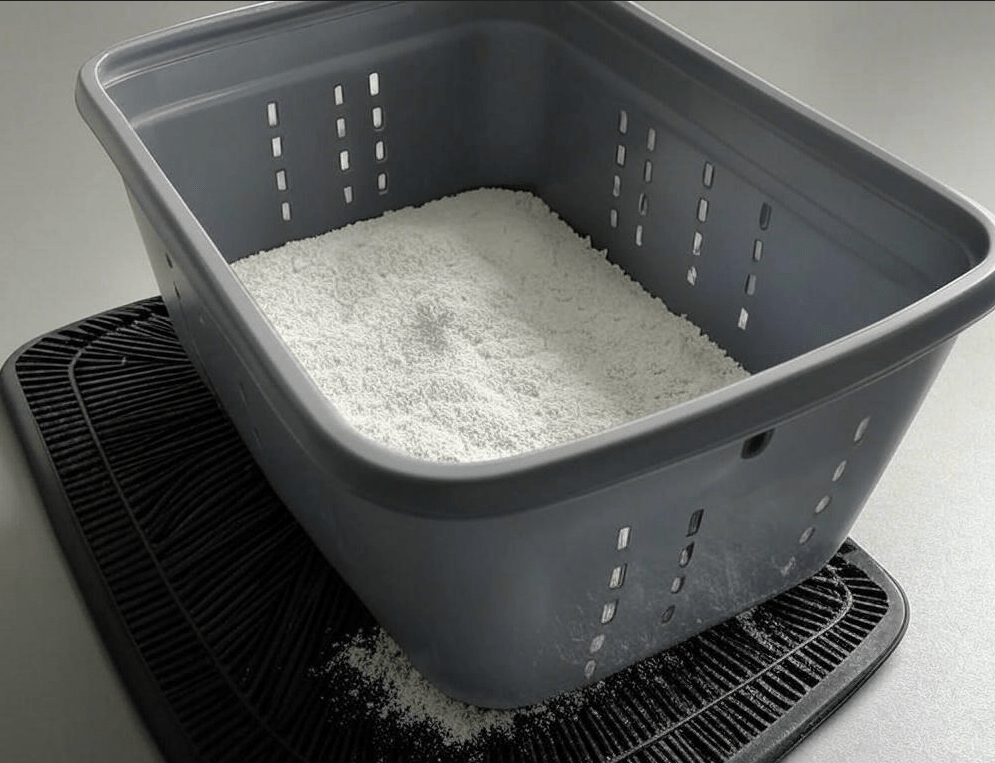
Choosing the Right Litter
1.Clumping litter is easiest to scoop and maintain.
2.Depth recommendation: 3-4 inches—enough for digging but not wasteful.
3.Avoid heavily scented litters, as some cats dislike strong smells.
Odor Control Strategies
1.Ventilation: If using a lid, drill small air holes to prevent ammonia buildup.
2.Baking soda: Sprinkle a thin layer at the bottom before adding litter.
3.Activated charcoal filters (if using a covered bin) help neutralize odors.
Litter Scatter Prevention
1.Place a high-quality litter mat outside the entryway.
2.Try a “litter catching” bin design by adding a small lip at the entry point.
3.Use a sifting litter system inside the bin for better litter containment.
Maintenance Tips for Long-Term Use
1.Scoop daily to prevent odor buildup.
2.Deep clean monthly: Wash with mild soap and warm water (avoid bleach).
3.Replace the bin yearly if scratches or odors persist.
Converting a storage bin into a litter box isn’t just about saving money—it’s about creating a customized, spacious, and hygienic bathroom solution for your cat. By selecting the right bin, modifying it for easy access, and maintaining proper litter hygiene, you can provide a stress-free experience for both you and your feline companion.
Pro Tip: Observe your cat’s behavior after setup. If they hesitate to use it, try adjusting entry points or litter type. Every cat is different, and small tweaks can make a big difference!
Common Mistakes to Avoid When Using a Storage Bin Litter Box
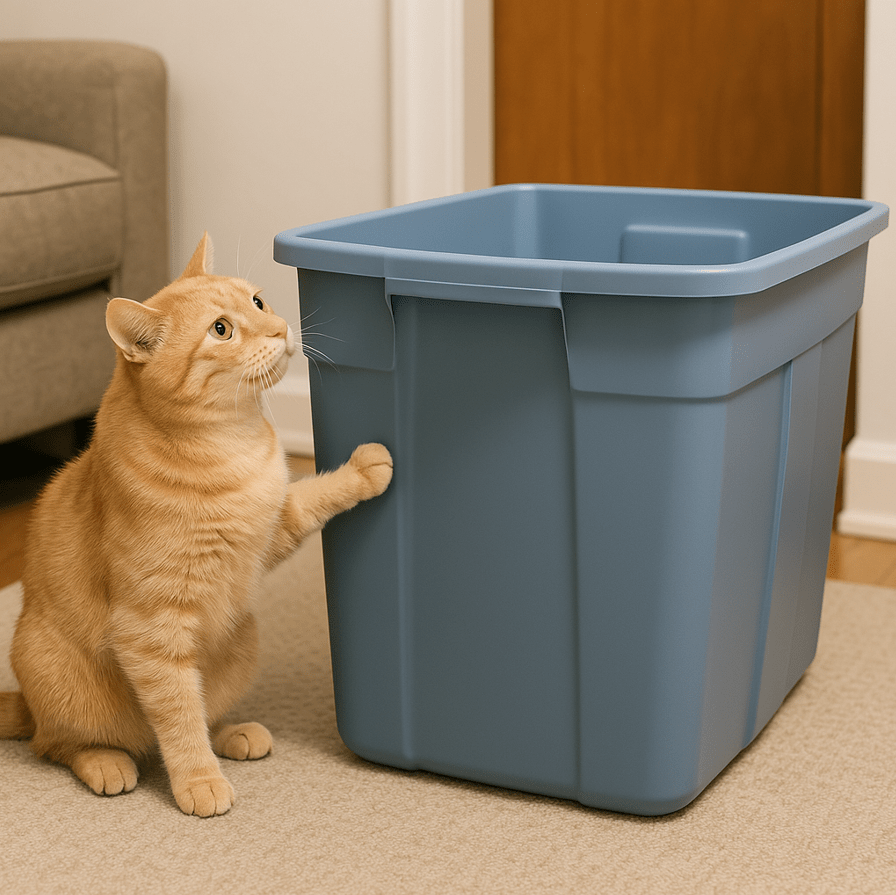
While storage bins are highly functional, some mistakes can make them less effective:
Wrong Size or Height – A bin that’s too tall may discourage older or smaller cats from using it. Always ensure easy entry.
Poor Ventilation – If using a covered bin, ensure proper airflow to prevent ammonia buildup. Drill small holes if necessary.
Inadequate Cleaning – Larger bins still need regular scooping (at least once daily) and deep cleaning weekly to prevent odors.
Ignoring Your Cat’s Preferences – Some cats dislike enclosed spaces. Monitor their behavior and adjust the setup if they seem reluctant to use it.
Maintaining Hygiene in a Multi-Cat Home
With multiple cats, cleanliness becomes even more crucial. Here’s how to keep your storage bin litter boxes fresh:
Scoop daily to prevent waste buildup.
Replace litter completely every 1-2 weeks.
Wash the bin monthly with mild soap and water (avoid harsh chemicals).
Use clumping litter for easier waste removal.
Place bins in quiet, low-traffic areas to reduce stress.
For homes with several cats, the general rule is one litter box per cat, plus one extra. This prevents competition and accidents.
Final Verdict
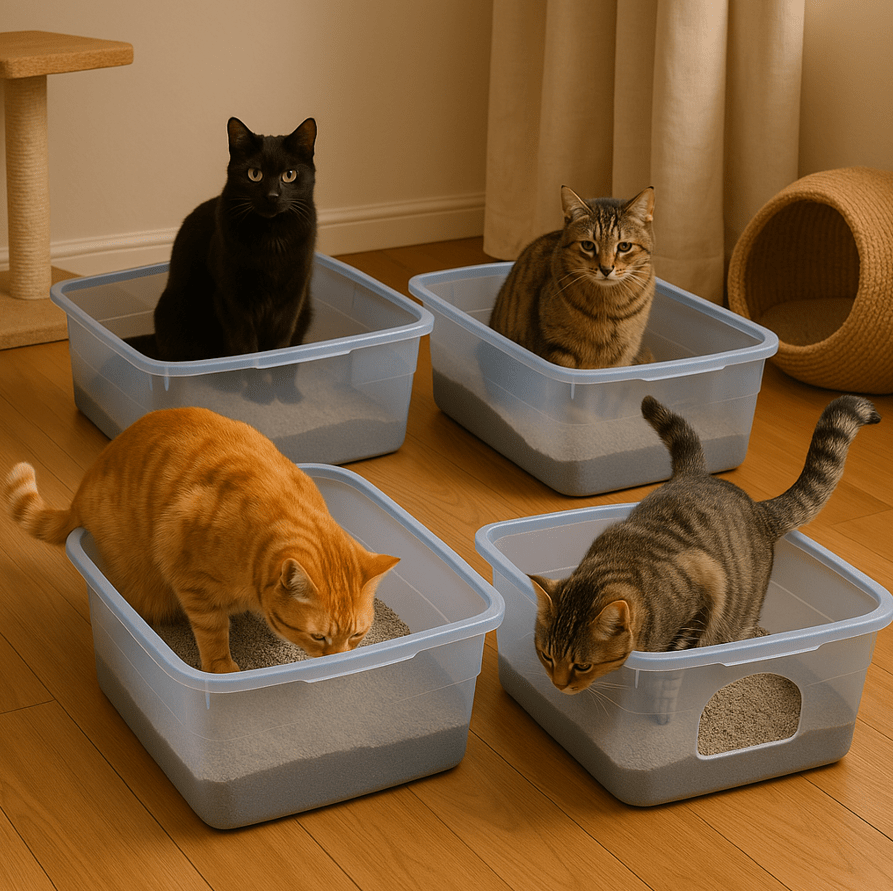
So, can you use a storage bin as a litter box? Absolutely—it’s a practical, budget-friendly, and customizable solution, especially for multi-cat households. By selecting the right bin, modifying it for accessibility, and maintaining proper hygiene, you can create an ideal litter setup that keeps both you and your cats happy.
If your feline friends have been struggling with traditional litter boxes, giving a storage bin a try might just be the genius hack you’ve been looking for.

